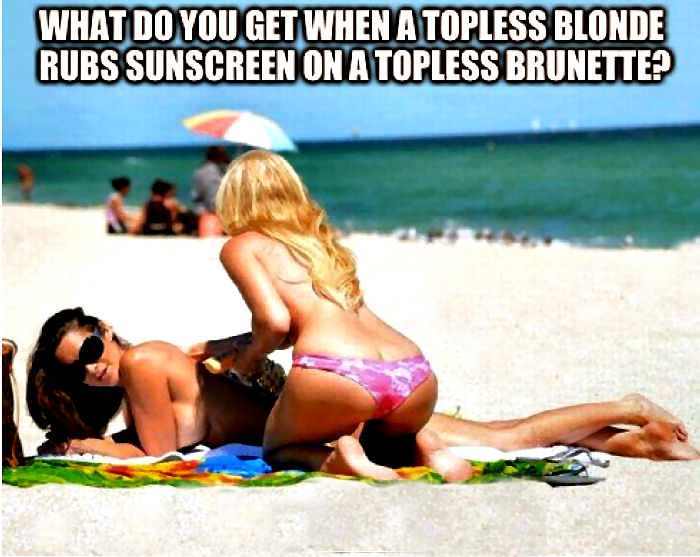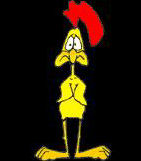|
|
||
|
||
|
Privacy Policy | Editorial Policy | Profit Policy | Join the Association | List of Members | Contact us | Index | Links |
||
|
Back Go to page: 1 2 3 4 5 6 7 8 9 10 11 12 13 14 15 16 17 18 19 20 Forward
|
||
|
Out in the Shed with Ted.
Ted McEvoy. |
||
|
|
||
|
This page is brought to you compliments of the Kedron Wavell Services Club, Brisbane’s superior Club.
|
||
|
How Car Washes Work.
Let's face it. Most of us have a car and we enjoy driving it, especially when it's shiny and clean. For this reason, car washes have remained popular ever since two Detroit men opened the first one, the Automated Laundry, in 1914.
That first “Automated Laundry” wasn’t really automated. It was basically a bucket and sponge type of operation where the cars were pushed manually through an assembly-line-like tunnel, where one attendant would soap the car as it went past, another would rinse, and a third would dry. Of course, after pushing a few cars through, the attendants got pretty tired.
The first “automatic” conveyor car wash was opened in Hollywood, California—of course, where else—in 1940. Instead of manually pushing the cars through, this car wash had a winch system that hooked to the bumper and pulled the car through as men splashed away in the tunnel, soaping, scrubbing, wiping, and drying cars as they came through. By 1946, a man named Thomas Simpson is credited with inventing the first semi-automatic car wash system that took most of the manual labour out of the tunnel. It had a conveyor belt that hooked to the bumper of cars, an overhead water sprinkler with three sets of manually operated brushes, and a 50 HP air blower to help dry the car.
Then, in 1951, Archie, Dean and Eldon Anderson got the great idea to fully automate their car wash. As the story goes, the Anderson clan invented the completely hands-free automatic car wash in Seattle. Cars would be pulled through the tunnel and machines sprayed soap on them, big brushes scrubbed them, nozzles rinsed them, and giant blowers dried them. Needless to say, this was a big hit! Soon, many other car wash owners were installing automatic equipment in their car wash business. Through the 1960’s, fully mechanized car washing systems were being installed across America. With conveyor car wash equipment advancing, the 60’s saw inventions such as recirculating water systems, soft cloth friction washing, roller on demand conveyor, and wraparound brush. By the late 60’s car washes were becoming a prominent industry worldwide with car washes being installed in many countries, including Japan.
Today’s car washes are literally cleaning machines. They not only wash all five sides of the car at once, but scrub tyres and wash the undercarriage as well. They are more eco-friendly, with milder soaps and lower water and electric requirements. Many of the newer car washes even have express tunnels that get your car through quickly, all of which leads to more clean cars and happier car owners.
A lot of people wash their own cars at home, but the convenience of an automated car wash and relatively low cost can be hard to beat.
There are two types, self service or automatic.
Self service: - An open bay (the area that the car sits inside) is typically used in these systems. Self-service systems have a pressure sprayer, and sometimes a foaming brush, that is connected to a large central pump. The sprayer has a coin-operated dial system to select the option you want, such as "soap," "rinse" and "wax." A timer shuts the water off after a certain period of time, at which point you must put in more coins if you want more water.
Automatic: - There are two types here:-
Exterior rollover - exterior rollover car washes are automated systems where you drive your car inside the bay. Once your car is in the correct position, a signal informs you to stop. At that point, the car-wash equipment moves over your car on a track, performing a specific function, such as applying soap or rinsing, with each pass. Exterior rollover systems are very common at servos, where the price is often discounted in conjunction with buying a tank of fuel.
Pull in. These can be either a touchless or cloth friction wash. A touchless car wash relies on high-powered jets of water and strong detergents to clean the car. Only the water and cleaning solutions actually come in physical contact with the car. Cloth friction wash systems use soft cloth that is moved around against the surface of the car.
First, the car is placed on a conveyor track. At the beginning of the conveyor is a device called a correlator. This is simply a series of wheels or rollers that allow the wheel of the car to slide sideways until it is aligned with the conveyor. The car’s engine is turned off and it is placed in neutral. Most conveyor systems have small rollers that pop up behind the wheel once it is on the conveyor. The roller pushes the wheel forward, causing the car to roll along through the tunnel, which is the term used to describe the long bay used for exterior-only and full-service systems. There are two standard types of conveyor systems:
Once the car enters the tunnel, it passes through an infrared beam between two sensors.
The eye on one side emits infrared light that is picked up by the eye on the other side. As soon as the beam is interrupted, it sends a signal to the digital control system (DCS), the computer that runs the automated portion of the car wash. By measuring the amount of time that the signal is interrupted, the DCS determines the length of the vehicle and adjusts everything accordingly.
Immediately after the eyes, most car washes have a pre-soak. This is an arch that contains several small nozzles that spray a special solution all over the car. This solution does a couple of things:
A lot of car washes also have a set of nozzles arranged near the ground
that are called tyre a
In this car wash, the car then passes through a mitter curtain. This is a series of long, soft strips of cloth that hang from a frame near the top of the tunnel. The frame is connected to a motorized shaft that moves the frame up and down in a circular pattern. This makes the cloth strips rub back and forth across the horizontal surfaces of the car.
The mitter curtain cleans the bonnet, roof and boot of the car by swishing back and forth over the surface.
The next item is the foam applicator. This applies a detergent to the car that becomes a deep-cleaning foam on contact. The nozzles on the foam applicator, as well as most other spray systems in a car wash, can be adjusted to change the angle of the spray and the size of the opening. The foam is created by mixing a chemical cleaner, which varies between car washes, with water and air. There are usually separate adjustment controls for determining the exact mix of the three components. The chemical typically contains some colouring agent to make the foam more eye-pleasing and obvious.
The car then passes through the scrubbers. The scrubbers are large vertical cylinders with hundreds of small cloth strips attached to them. The scrubbers rotate rapidly, anywhere from 100 to 500 rpm, spinning the cloth strips until they are perpendicular to the cylinder. Although the cloth strips are quite soft, it would feel like a whip if you got hit by them. Scrubbers normally have hydraulic motors that spin them - a lot safer than electric ones especially with all that water hanging around. There is at least one scrubber on each side, and there may be two or more. As the car moves past the scrubbers, the cloth strips brush along the vertical surfaces of the car.
S
The cloth used in the scrubbers is very soft and regularly cleaned to ensure that there is nothing caught up in them that could scratch the cars. They are replaced once they become worn or too soiled to clean effectively.
The scrubbers remove the dirt that the foam and pre-soak has loosened up.
The next stage is the blast. A high-pressure washer, in a system of
rotating water jets, spray concentrated streams of water onto the car.
The nozzles of each water jet are typically arranged like a pinwheel,
with each nozzle angled slightly away from the centre.
The powerful water jets remove most of the detergent and grime from the car. High-pressure systems use a lot of water, perhaps 1,100 to 1,500 litres per car. In order to provide so much water in a rapid manner, a car wash usually has a special pressure tank nearby that holds the water for this specific system. In most systems, almost all of the water is recaptured and recycled back to the pressure tank after each use.
Next, the car goes through a rinse arch. This is a series of nozzles arranged on an arch that use clean water to remove whatever residue is left after the high-pressure washer, scrubbers and mitter curtain have done their respective jobs. In an average car wash, there are multiple rinse arches, usually after each major cleaning station.
The last rinse arch in the tunnel, aptly called the final rinse, should always use clean, non-recycled water to ensure that all residue is removed from the surface of the car.
After the car is completely washed, the final step in the automated process is the dryer. Much like a giant hair dryer, the dryer in a car wash heats large amounts of air and forces it out through a series of nozzles. These heated blasts of air rapidly dry the surface of the car.
A typical car wash may have the following stations:
The dryer has a large, flat, round section just before the nozzle opening. This section is called the silencer. Like a muffler, the dryer's silencer deadens the noise created by the air being forced through the system. A dryer in a full-service car wash does not completely dry the car because attendants will go over the car with towels once it leaves the tunnel.
As the car comes out of the tunnel, it is pushed off the conveyor track. In an exterior-only system, you most likely remain in the car. When it comes out of the tunnel, you start the engine and leave. In a full-service car wash, an attendant drives the car over to the finishing station. Here, attendants clean the interior of the car, removing rubbish and vacuuming. They usually clean the windows, wipe down the dashboard and doors, add some air freshener and hand-dry the exterior. They may also clean and polish the wheels and polish any chrome, depending on the service options available.
The vacuum system at a car wash is a lot different from your typical home vacuum. It normally has a large central vacuum with multiple hoses connected to it. The hoses are usually either stretched overhead to each vacuuming station or buried underground.
All this equipment requires a lot of power and most are fed by 3 phases.
A car wash is a competitive and often stressful business. Because the
revenue per car is
|
||
|
You know that tingly little feeling you get when you like someone? That’s common sense leaving your body!
Planning an event??
Kedron-Wavell Services Club Inc. is a unique one-stop venue that can satisfy all of your event requirements. Whether you are planning a corporate seminar, workshop, meeting, reunion, business launch, cocktail party or dinner, the Club offers a variety of function rooms to cater for 15 to 500 guests.
Their point of difference and areas of expertise includes:
|
||
|
|
||
|
Technical equipment and services they have:
You can download their full Events Package HERE which includes room specifications, menu’s, facilities details, services offered, room hire etc. Virtual tours of all their rooms are now available, to view virtual tours click HERE.
|
||
|
I just saw a very large spider in my bath tub, so I got two pieces of tissue and very very carefully - burnt the house down. |
||
|
|
||
|
Seniors.
Very shortly it will become compulsory for senior citizens to carry not only their ID, but also their insurance documents, their prescription list, a compact version of their medical file, the statement declaring if they want to be resuscitated after a heart attack, stroke, etc. etc.
Consequently, a lot of
paperwork will have to be carried when a senior citizen goes out the
front door OR when they travel! |
||
|
|
||
|
Magnet Therapy:
Magnetic devices are claimed to relieve pain and to have therapeutic value against a large number of diseases and conditions. The way to evaluate such claims is to ask whether scientific studies have been published. Pulsed electromagnetic fields, which induce measurable electric fields, have been demonstrated effective for treating slow-healing fractures and have shown promise for a few other conditions. Relatively few studies have been published on the effect on pain of small, static magnets marketed to consumers. Explanations that magnetic fields "increase circulation," "reduce inflammation," or "speed recovery from injuries" are simplistic and are not supported by the weight of experimental evidence
Research Findings.
The main basis for pain-reduction claims studies are two double-blind
studies, one conducted at Baylor College of Medicine in Houston, which
dealt with knee pain and the
The Baylor study compared the effects of magnets and sham magnets on knee pain. The study involved 50 adult patients with pain related to having been infected with the polio virus when they were children. A static magnetic device or a placebo device was applied to the patient's skin for 45 minutes. The patients were asked to rate how much pain they experienced when a "trigger point was touched." The researchers reported that the 29 patients exposed to the magnetic device achieved lower pain scores than did the 21 who were exposed to the placebo device. This study provides no legitimate basis for concluding that magnets offer any health-related benefit:
The multicenter study, headed by Michael Weintraub, M.D., of New York
Medical College, involved 48 investigators in 27 US states. Of 375
subjects with diabetic neuropathy who
At least three well-designed pain studies have been negative:
Magnets have also been claimed to increase circulation. This claim is
false. If it were true,
Legal and Regulatory Actions.
In 1998, Magnetherapy, Inc., signed an Assurance of Voluntary Compliance with the State of Texas to pay a $30,000 penalty and to stop claiming that wearing its magnetic device near areas of pain and inflammation will relieve pain due to arthritis, migraine headaches, sciatica or heel spurs. The agreement also requires Magnetherapy to stop making claims that its magnets can cure, treat, or mitigate any disease or can affect any change in the human body, unless its devices are FDA-approved for those purposes. Ads for the company's Tectonic Magnets had featured testimonials from athletes, including golfers from the senior pro tours. Various ads had claimed that Tectonic Magnets would provide symptomatic relief from certain painful conditions and could restore range of motion to muscles and joints. The company had provided retailers with display packages that included health claims, written testimonials, and posters of sports stars.
Texas Attorney General Dan Morales stated that some claims were false or unsubstantiated and others had rendered the product unapproved medical devices under Texas law. In 1997, the FDA had warned Magnetherapy to stop claiming that its products would relieve arthritis; tennis elbow; low back pain; sciatica; migraine headache; muscle soreness; neck, knee, ankle, and shoulder pain; heel spurs; bunions; arthritic fingers and toes; and could reduce pain and inflammation in the affected areas by increasing blood and oxygen flow.
In 1999, the FTC obtained a consent agreement barring two companies from making unsubstantiated claims about their magnetic products. Magnetic Therapeutic Technologies, of Irving, Texas, is barred from claiming that its magnetic sleep pads or other products:
Pain Stops Here! Inc., of Baiting Hollow, N.Y., may no longer claim that
its "magnetized
On August 8, 2000, the Consumer Justice Centre, of Laguna Niguel, California filed suit in Orange County Superior Court charging that Florsheim and a local shoe store (Shoe Emporium) made false and fraudulent claims that their MagneForce shoes:
A few days after this suit was filed, Florsheim removed the disputed ad from its Web site.
In 2001, Richard Markoll, his wife Ernestine, David H. Trock, M.D., and Bio-Magnetic Treatment Systems (BMTS) pled guilty to criminal charges in connection with a scheme involving pulsed magnetic therapy. The participants used fraudulent billing codes to seek payment from Medicare and three other insurance plans for treatment with a device (Electro-Magnetic Induction Treatment System, Model 30/30) that lacked FDA approval. The treatments, called pulsed signal therapy (PST), were administered in a clinical trial on an investigational basis not approved by the FDA. The Markolls were sentenced to 3 years’ probation, a $4,000 fine and a $100 special assessment. Ernestine Markoll was sentenced to 2 years’ probation, a $1,000 fine and a $25 special assessment. Magnetic Therapy, was sentenced to a 1-day summary probation and a $200 special assessment.
The Markolls also signed a civil settlement under which they agreed to pay the U.S Government $4 million.
The device was invented by Richard Markoll, MD, PhD, who does not have a medical license but is described in Web site biographies as a graduate of Grace University School of Medicine, a Caribbean medical school. Trock, a former principal investigator for Magnetic Therapy Center, PC, Danbury, CT, was sentenced to 6 months’ probation and ordered to make restitution of $35,250. Trock has co-authored studies claiming that PST is effective for treating pain, but the device is not FDA-approved for that purpose.
|
||
|
|
||
|
|
||
|
In September 2002, California Attorney General Bill Lockyer charged
Florida-based European Health Concepts, Inc. (EHC) with making false and
misleading claims about its magnetic mattress pads and seat cushions.
The complaint, filed in Sacramento Superior Court, also named EHC
president Kevin Todd and several sales managers and agents as
defendants. The suit seeks more than $1 million in civil penalties for
engaging in unfair business practices and making false claims; $500,000
in civil penalties for transactions involving senior citizens; and full
restitution for purchasers of the products. The complaint
A recent press report indicates that Thorsten Wietschel, who markets magnetic mattresses through local gatherings, had two brushes with the law in the United States and is now pitching them in Canada. The report states that Wietschel:
The Bottom Line.
There is no scientific basis to conclude that small, static magnets can relieve pain or influence the course of any disease. In fact, many of today's products produce no significant magnetic field at or beneath the skin's surface. Despite a lack of scientific evidence to support claims that commercially available magnetic therapy devices work, wearable magnets remain extremely popular. Global sale of therapeutic magnets is estimated to be at least $1 billion a year, according to the BBC.
Don’t get suckered in, it’s all bunk!!
|
||
|
|
||
|
|
||
|
Click HERE for the answer! |
||
|
|
||
|
Vietnam.
The 1st Australian Task Force (1 ATF) operated in Vietnam from March 1966 until November 1971. Some of its battles have become well-known to the public through film and literature. Many however, have not.
A website, which is the product of over twenty years of research, provides unprecedented access to information on nearly all ground combat actions Australians fought in during the Vietnam War, numbering over 4,500. Through the use of modern Web technologies, veterans, researchers and the general public now have the power to understand the Vietnam War at a scale and depth not previously possible.
The Battle Map provides an ideal way to catalogue and share veterans’ stories, keeping them accessible to current and future generations. Our aim is to enable Vietnam veterans to record their stories, perspectives and images against contacts on the Battle Map. In doing so, we hope to develop the ‘ground truth’ picture of what happened at the tactical level, revealing the human dimension of the War.
You can see it HERE.
|
||
|
|
||
|
Blessed are those who are cracked, for they are the ones who let in the light!
|
||
|
|
||
|
Ok, Ok!! – I’m going back to my room now!!
|
||
|
|
||
|
|
||
|
Back Go to page: 1 2 3 4 5 6 7 8 9 10 11 12 13 14 15 16 17 18 19 20 Forward |
||
|
|


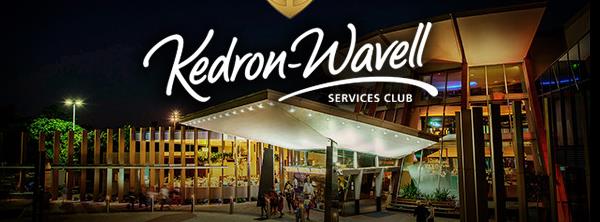
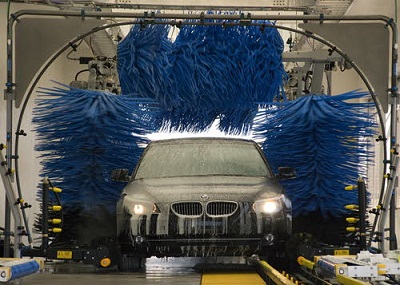
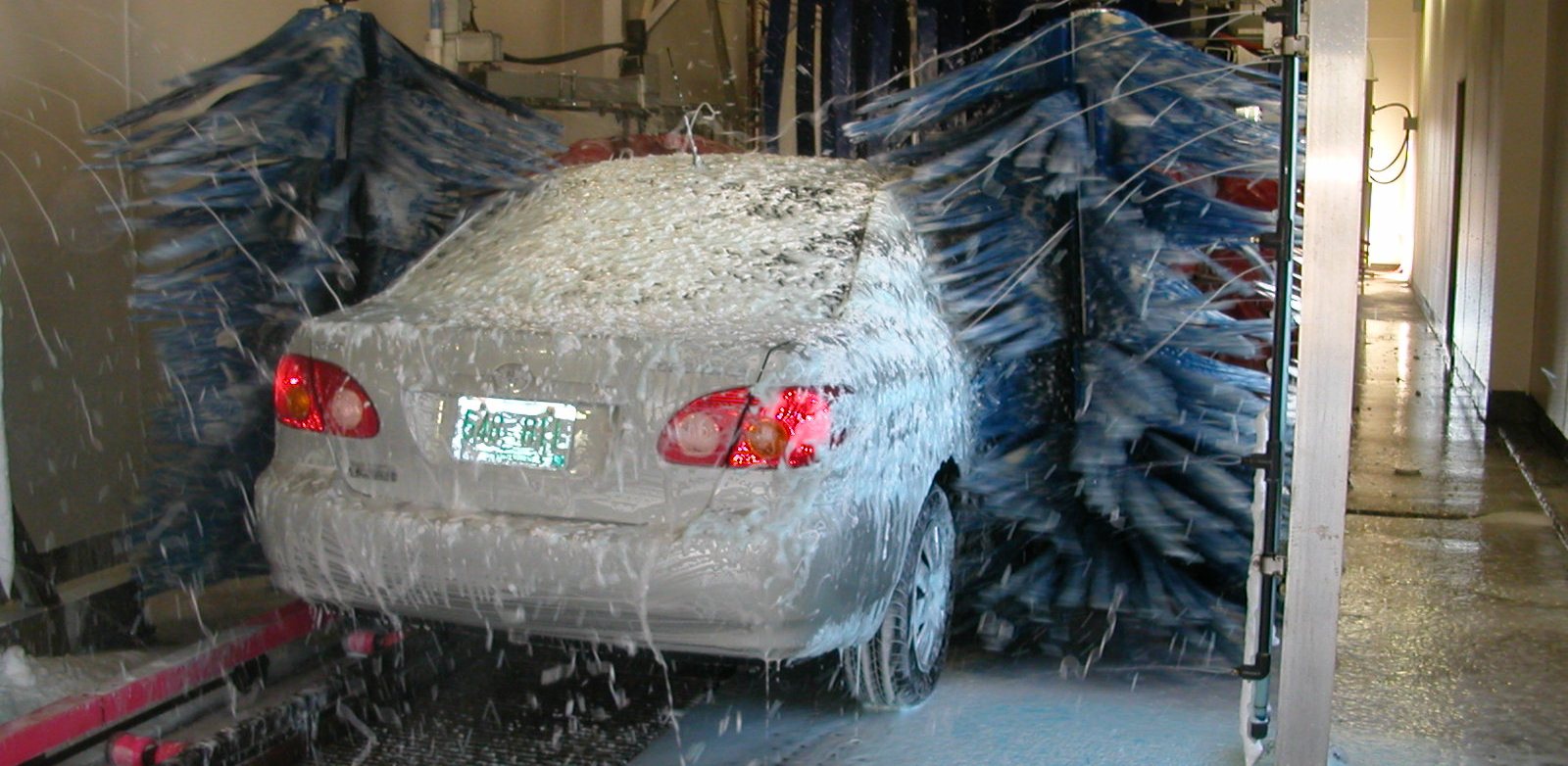
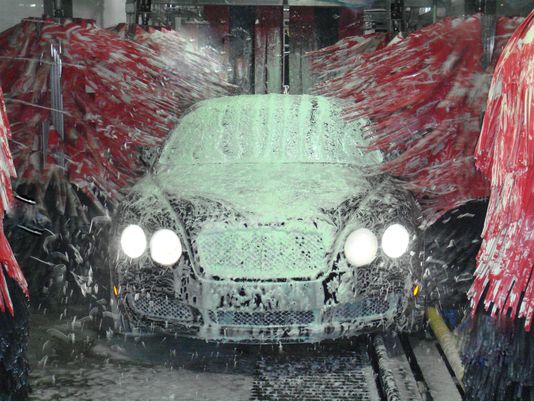 pplicators.
These nozzles spray the tyres with a solution designed specifically for
removing brake dust and brightening the black rubber of the tyre.
pplicators.
These nozzles spray the tyres with a solution designed specifically for
removing brake dust and brightening the black rubber of the tyre.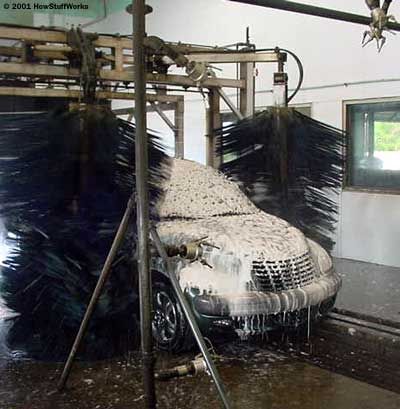 ome
car washes also have wrap-around washers. These are scrubbers on short
booms that can move around to the front and rear of the vehicle,
scrubbing those vertical surfaces as well. Like most of the mechanical
equipment in the car wash, the washers are run by a combination of
electric motors and hydraulics. Normally, a single, large hydraulic
power unit is connected to all of the various hydraulic pumps throughout
the car wash.
ome
car washes also have wrap-around washers. These are scrubbers on short
booms that can move around to the front and rear of the vehicle,
scrubbing those vertical surfaces as well. Like most of the mechanical
equipment in the car wash, the washers are run by a combination of
electric motors and hydraulics. Normally, a single, large hydraulic
power unit is connected to all of the various hydraulic pumps throughout
the car wash.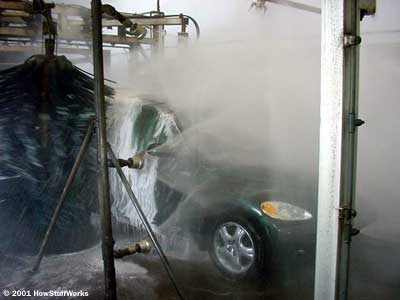 The
force of the water shooting from the nozzles causes the water jet to
spin rapidly. This means that the stream of water moves in a circular
pattern as it hits the car. The strength of the stream and the circular
motion combine to provide a powerful scrubbing action on the surface of
the car. The force of the water is incredible, with some systems rated
at 1,000 pounds per square inch (psi), enough to easily knock a person
off his or her feet!
The
force of the water shooting from the nozzles causes the water jet to
spin rapidly. This means that the stream of water moves in a circular
pattern as it hits the car. The strength of the stream and the circular
motion combine to provide a powerful scrubbing action on the surface of
the car. The force of the water is incredible, with some systems rated
at 1,000 pounds per square inch (psi), enough to easily knock a person
off his or her feet!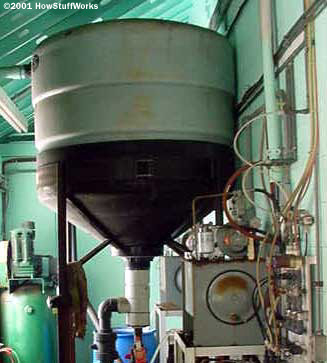
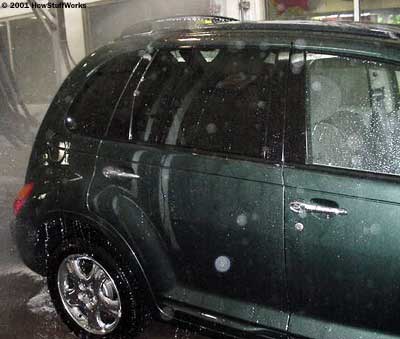
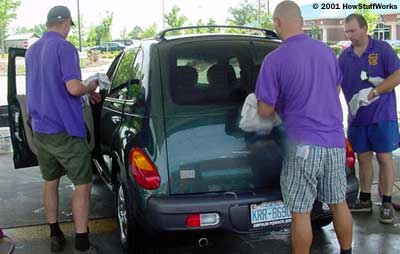 very
low, you have to wash a lot of cars to make a reasonable profit.
Probably the biggest factor in this business is the weather. If it is
raining, people do not go to the car wash. In fact, a frustrating
problem for car-wash owners is the forecast of bad weather. Whenever the
forecast calls for rain or some other precipitation, people don't get
their cars washed because they figure that the bad weather will make it
a wasted effort. An interesting fact is that most car washes use
substantially less water to wash your car than you would use if you were
washing it yourself at home. For example, one report says that washing
your car at home typically uses between 300 and 550 litres of water,
while a car-wash facility (without a high-pressure wash) averages less
than 175 litres per car. In addition, all of the chemicals and detergents
are washed into the sewer when you wash your car at home, but a car-wash
facility must dispose of the waste in accordance with local regulations.
This means that washing your car at a car-wash facility is usually
better for the environment.
very
low, you have to wash a lot of cars to make a reasonable profit.
Probably the biggest factor in this business is the weather. If it is
raining, people do not go to the car wash. In fact, a frustrating
problem for car-wash owners is the forecast of bad weather. Whenever the
forecast calls for rain or some other precipitation, people don't get
their cars washed because they figure that the bad weather will make it
a wasted effort. An interesting fact is that most car washes use
substantially less water to wash your car than you would use if you were
washing it yourself at home. For example, one report says that washing
your car at home typically uses between 300 and 550 litres of water,
while a car-wash facility (without a high-pressure wash) averages less
than 175 litres per car. In addition, all of the chemicals and detergents
are washed into the sewer when you wash your car at home, but a car-wash
facility must dispose of the waste in accordance with local regulations.
This means that washing your car at a car-wash facility is usually
better for the environment.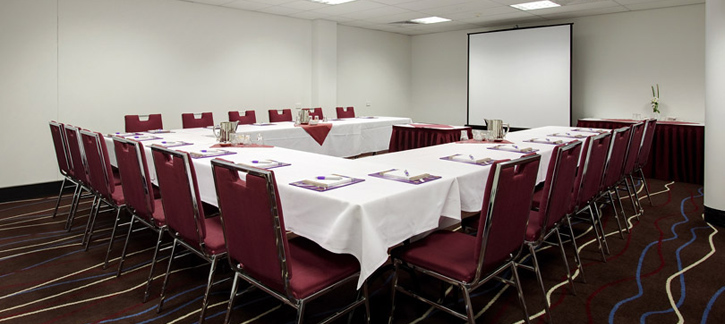

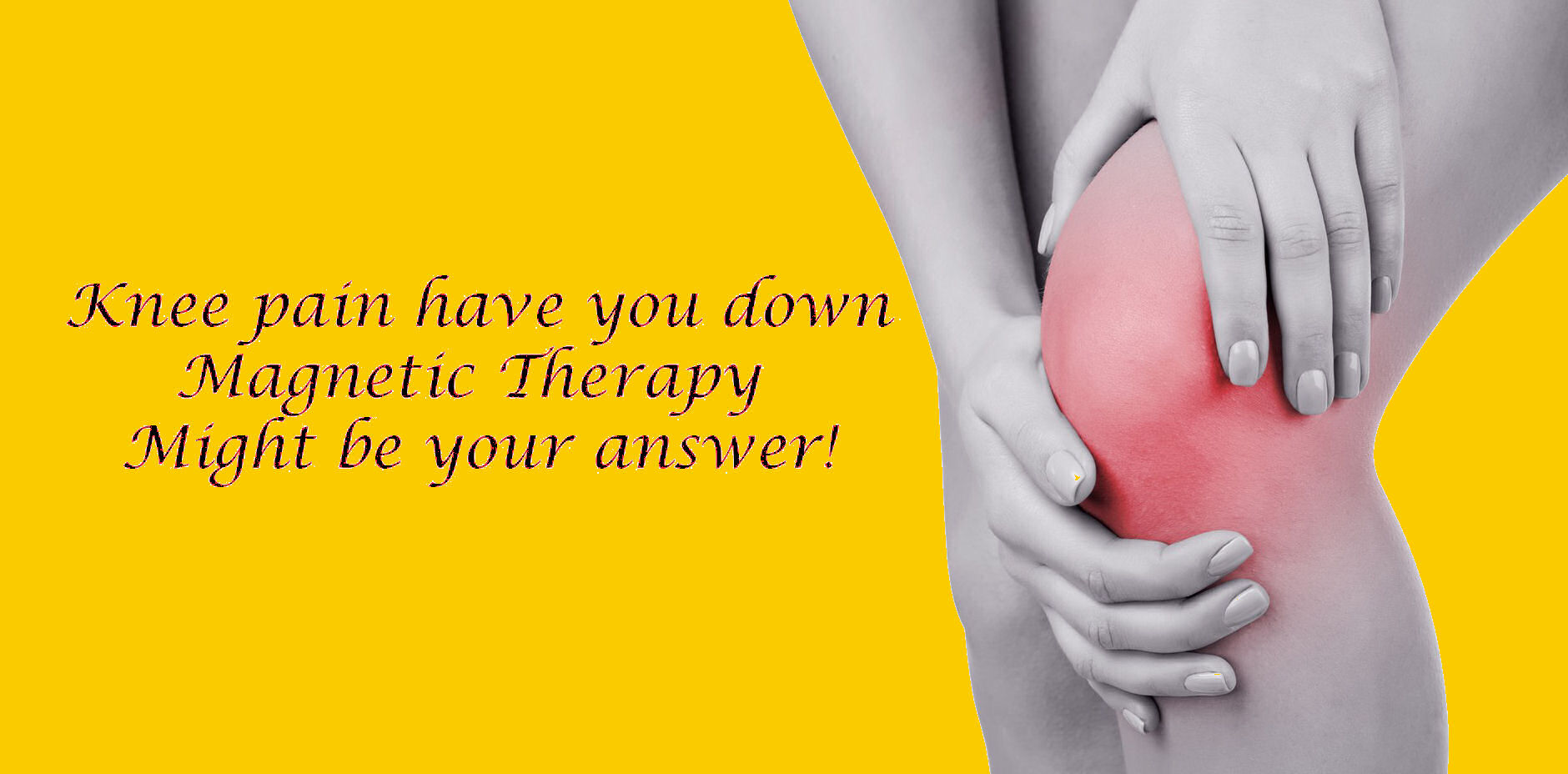 other conducted at 27 sites which tested the effects on diabetic
neuropathy, a degenerative condition that produces pain and burning of
the feet. Both of these studies had significant flaws in their design.
Better studies have found no significant benefit.
other conducted at 27 sites which tested the effects on diabetic
neuropathy, a degenerative condition that produces pain and burning of
the feet. Both of these studies had significant flaws in their design.
Better studies have found no significant benefit. 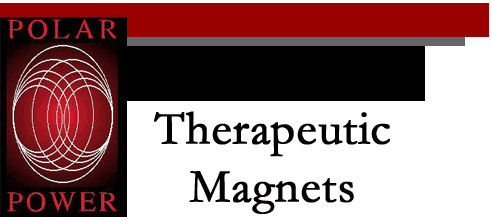 were randomly assigned to wear magnetized insoles or placebo
(nonmagnetic) devices for 4 months, 259 completed the study. The authors
concluded that there were statistically significant reductions during
the third and fourth months in burning; numbness and tingling; and
exercise-induced foot pain. However, they noted that despite statistical
improvement in pain and quality-of-life scores, there was only "modest
clinical benefit." There are also good reasons to challenge the
statistical analysis that underlies their conclusions:
were randomly assigned to wear magnetized insoles or placebo
(nonmagnetic) devices for 4 months, 259 completed the study. The authors
concluded that there were statistically significant reductions during
the third and fourth months in burning; numbness and tingling; and
exercise-induced foot pain. However, they noted that despite statistical
improvement in pain and quality-of-life scores, there was only "modest
clinical benefit." There are also good reasons to challenge the
statistical analysis that underlies their conclusions: 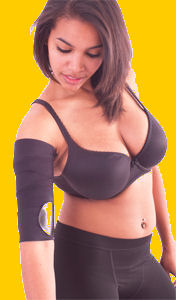 placing a magnet on the skin would make the area under the magnet become
red, which it does not. Moreover, a well-designed study that actually
measured blood flow has found no increase. The study involved 12 healthy
volunteers who were exposed to either a 1000-gauss magnetic disk or an
identically appearing disk that was not magnetic. No change in the
amount or speed of blood flow was observed when either disk was applied
to their arm. The magnets were manufactured by Magnetherapy, Inc, of
Riviera Beach, Florida, a company that has been subjected to two
regulatory actions.
placing a magnet on the skin would make the area under the magnet become
red, which it does not. Moreover, a well-designed study that actually
measured blood flow has found no increase. The study involved 12 healthy
volunteers who were exposed to either a 1000-gauss magnetic disk or an
identically appearing disk that was not magnetic. No change in the
amount or speed of blood flow was observed when either disk was applied
to their arm. The magnets were manufactured by Magnetherapy, Inc, of
Riviera Beach, Florida, a company that has been subjected to two
regulatory actions. 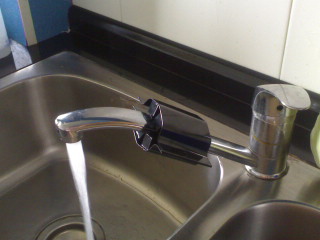 water" or other products are useful against cancer, diseases of the
liver or other internal organs, gallstones, kidney stones, urinary
infection, gastric ulcers, dysentery, diarrhoea, skin ulcers, bed sores,
arthritis, bursitis, tendinitis, sprains, strains, sciatica, heart
disease, circulatory disease, arthritis, auto-immune illness, neuro-degenerative
disease, and allergies, and could stimulate the growth of plants.
water" or other products are useful against cancer, diseases of the
liver or other internal organs, gallstones, kidney stones, urinary
infection, gastric ulcers, dysentery, diarrhoea, skin ulcers, bed sores,
arthritis, bursitis, tendinitis, sprains, strains, sciatica, heart
disease, circulatory disease, arthritis, auto-immune illness, neuro-degenerative
disease, and allergies, and could stimulate the growth of plants.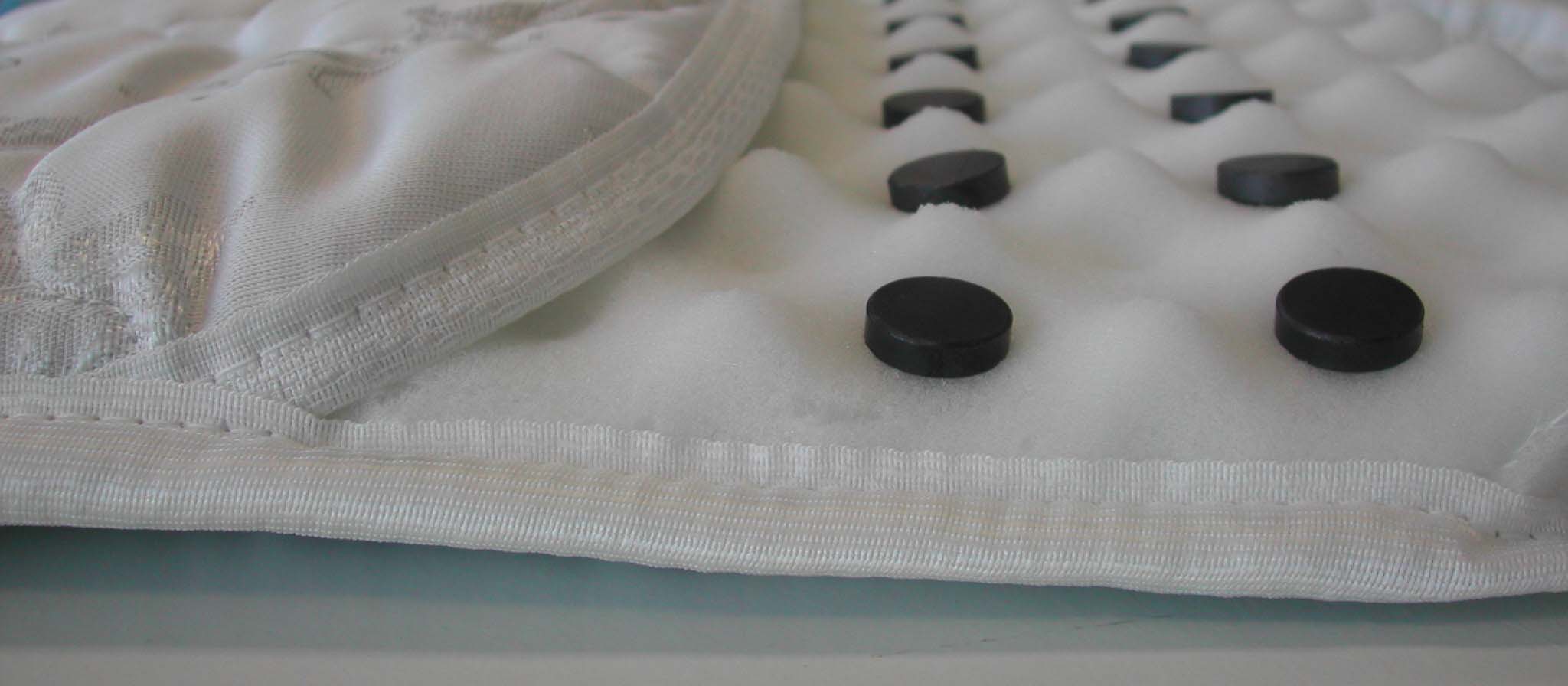
 alleged that prospective customers, primarily senior citizens, were
invited to attend a free dinner seminar at which they were told that
EHC's products could help people suffering from fibromyalgia, lupus,
sciatica, herniated discs, asthma, bronchitis, cataracts, chronic
fatigue syndrome, colitis, diverticulitis, heart disease, multiple
sclerosis, and more than 50 other health conditions. The sales agents
offered phoney price discounts for immediate purchases that actually
were the company's regular prices. (
alleged that prospective customers, primarily senior citizens, were
invited to attend a free dinner seminar at which they were told that
EHC's products could help people suffering from fibromyalgia, lupus,
sciatica, herniated discs, asthma, bronchitis, cataracts, chronic
fatigue syndrome, colitis, diverticulitis, heart disease, multiple
sclerosis, and more than 50 other health conditions. The sales agents
offered phoney price discounts for immediate purchases that actually
were the company's regular prices. (